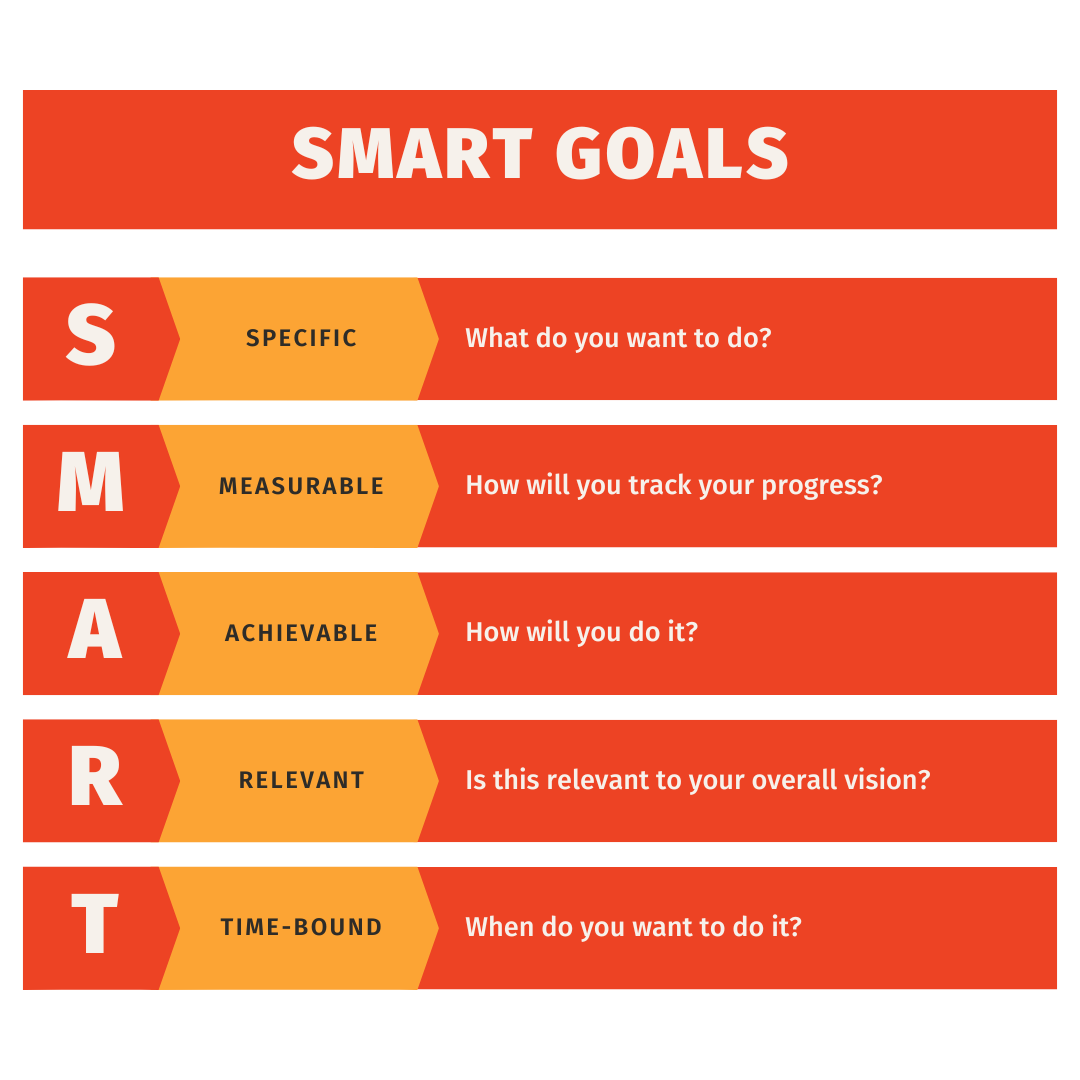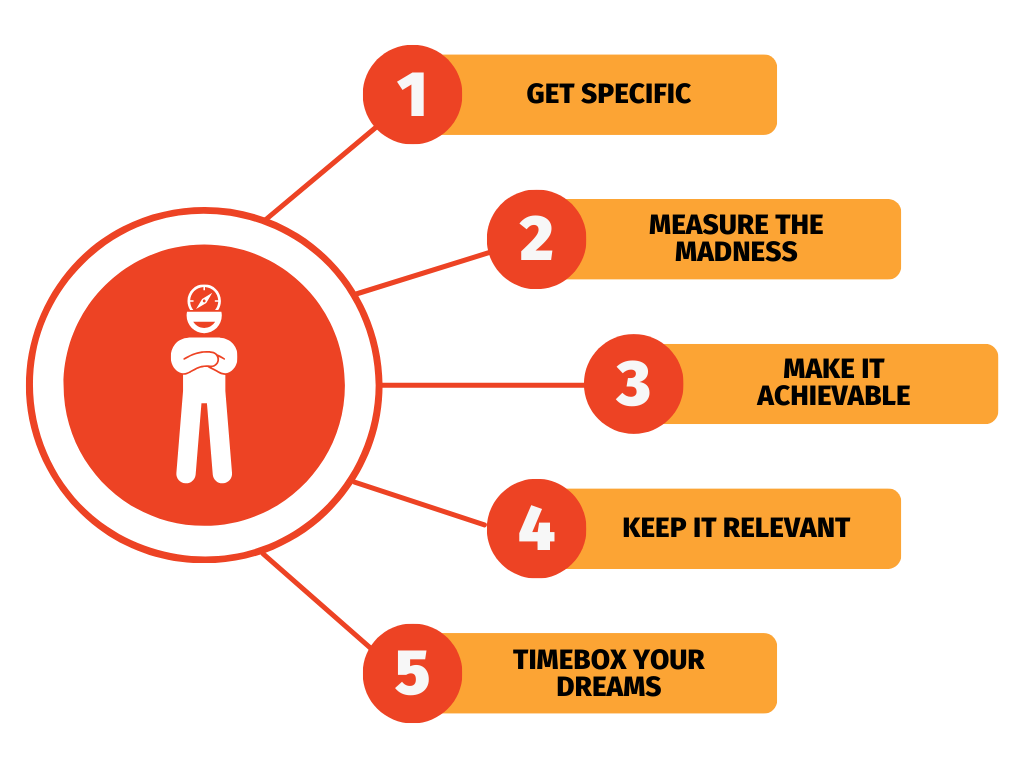Imagine you're Michelangelo, chisel in hand, staring at a block of marble so cold and white it's almost blinding. In that stone, you don't see a formless lump. You see David. But what if you didn't? What if you just saw marble—lots of potential, zero clarity? You could swing that hammer all day, chip away for years, and end up with nothing more than a pile of rubble. That’s what happens when creatives—people like you, full of ideas—wander aimlessly, intoxicated by inspiration but crippled by the lack of a plan.
SMART Goals are your hammer and chisel. Specific, Measurable, Achievable, Relevant, Time-bound. Words that sound like they belong in a corporate PowerPoint, not the dream-fueled world of art and creativity. But here’s the thing: Michelangelo wasn’t just an artist. He was a craftsman, a strategist, a guy who knew that without structure, even the grandest vision remains a ghost in the stone.
SMART Goals aren’t a leash for your creativity; they’re the map. They’re the blueprint that tells you where to strike, how deep, and how long. They’re the rules of the game, not to stifle your genius but to channel it, to carve out of that stone the masterpiece that only you can see.
The Why
SMART Goals are a methodical approach to setting objectives that are Specific, Measurable, Achievable, Relevant, and Time-bound. They’re designed to take your big, abstract ideas and break them down into actionable steps, ensuring you don’t just start the journey but actually reach your destination.

Let’s say you’re a freelance designer with a dream of launching your own line of sustainable fashion. The dream is vivid, but the steps to get there? Not so much. You could easily get lost in the details—choosing fabrics, designing, branding—without ever making progress. But with SMART Goals, you zero in.
- Specific: "I want to launch a sustainable fashion line" becomes "I will design and produce a 10-piece sustainable clothing collection."
- Measurable: You break it down further. "10 pieces by December, with each item designed and sampled by October."
- Achievable: You evaluate your resources. Can you realistically produce 10 pieces in this timeframe, or do you need to adjust? Maybe start with 5 well-designed items.
- Relevant: You ask yourself, "Does this goal align with my long-term vision of creating an eco-conscious brand?"
- Time-bound: Finally, you set the clock. "I will launch my collection on December 15th, with a soft launch on social media starting December 1st."
Now, instead of just dreaming about that desert oasis, you’re marching toward it, step by step. SMART Goals transform your journey from a scatterbrained trek through the sand into a deliberate, calculated march toward success.
The How
So, you're ready to stop wandering through the fog of inspiration and start chiseling out your masterpiece. Here’s how you carve those grand, abstract ideas into something real, something concrete. Here’s how you set SMART Goals that don’t just sit on paper but actually drag your creativity kicking and screaming into the light of day.

1. Get specific: Vague goals are like shooting an arrow in the dark. Sure, you might hit something, but it’s probably not the bullseye. Instead of saying, “I want to write a book,” say, “I will write a 70,000-word science fiction novel about a dystopian future where dreams are taxed.” The more detailed, the better. Specificity slices through the fog, giving you a target to aim at.
2. Measure the madness: Creatives hate numbers, right? But here’s the truth: If you can’t measure it, you can’t manage it. Break down your big goal into bite-sized milestones. Maybe it's 2,000 words a week or one painting per month. Numbers give you feedback, a way to check your pulse and see if you're still alive in the creative process.
3. Make it achievable: Dreams are supposed to be big, but goals? They need to be grounded. Don’t set yourself up for failure by aiming to compose a symphony in a weekend. Instead, set a goal that stretches you but doesn't break you. If you aim too high, you'll end up paralyzed. Too low, and you'll get bored. Find that sweet spot where effort meets reward.
4. Keep it relevant: Your goals should align with your larger vision. Ask yourself, “Does this goal move me closer to where I want to be as a creator?” If your heart beats for abstract art, don’t waste time mastering photorealism just because it’s trendy. Stay true to your core. Relevance ensures your goals aren’t just busy work but actual stepping stones on your creative journey.
5. Timebox your dreams: Deadlines are a double-edged sword. They can be the fire under your feet or the noose around your neck. But without them, your dreams stay dreams—forever floating, never landing. Set a date. Commit to it. Whether it’s completing the first draft in six months or finishing a series of paintings by the end of the year, time gives your goal urgency. Without it, you’re just wandering.
SMART Goals are your blueprint, your map out of the creative fog. With specificity, measurability, achievability, relevance, and time, you can turn vague ideas into tangible results.
Finding Your Creative North Star
Before you dive headfirst into setting goals, ask yourself why you’re creating in the first place. What’s driving you? Is it the thrill of self-expression, the desire to connect with others, or the ambition to leave a mark on the world? Your “why” is your North Star, the guiding light that will keep you focused when the work gets tough, when inspiration dries up, and when doubt creeps in. A strong "why" keeps you anchored, ensuring that your goals aren’t just tasks to check off but steps toward something meaningful.
Mistakes to Avoid
Setting goals is crucial, but doing it wrong can sabotage your efforts before you even begin. Here are some common pitfalls to steer clear of:
- Being too vague: “I want to get better at art” is a wish, not a goal. Without specifics, you’ll never know if you’re making progress. Aim for clear, detailed objectives that leave no room for ambiguity.
- Setting unrealistic goals: Dream big, but stay grounded. Goals that are too ambitious can lead to burnout and frustration. Break down large ambitions into smaller, manageable steps.
- Ignoring your why: If your goals don’t align with your deeper motivations, you’ll lose steam quickly. Make sure your goals resonate with your core purpose as a creative.
- Neglecting to measure progress: Without measurable milestones, it’s easy to drift off course. Regularly check in with your goals and adjust as needed. This keeps you on track and motivated.
- Lack of accountability: Keeping your goals private might seem safe, but it also makes it easier to abandon them. Share your goals with someone who will hold you accountable and provide support when needed.
Avoid these traps, and you’ll be well on your way to setting goals that not only inspire but also drive you toward real creative success.
Mental Models to Use with SMART Goals
To maximize the power of SMART Goals, integrating them with proven mental models can give you an edge. These tools sharpen your focus, streamline your efforts, and help you navigate the chaos of the creative process with precision.
- The Ulysses Pact: The Ulysses Pact is a commitment device named after the legendary Greek hero who, knowing he’d be tempted by the Sirens' song, had his crew tie him to the mast of his ship. The idea is simple: Make decisions now that will bind you to your goals later when temptation strikes. For creatives, this could mean setting strict deadlines, publicly committing to a project, or using tools that limit distractions. By pre-committing, you reduce the chances of derailing your progress when the inevitable lure of procrastination or self-doubt appears.
- The Eisenhower Matrix: The Eisenhower Matrix, also known as the Urgent-Important Matrix, is a prioritization tool that helps you decide where to focus your energy. When setting SMART Goals, use the Eisenhower Matrix to determine which goals to prioritize. Focus on those that are important but not necessarily urgent—they’re often the goals that lead to significant progress but can easily be sidelined by more pressing, less impactful tasks.
- The Pareto Principle: Identify the 20% of tasks that will yield 80% of the results. Focus your energy on the high-impact activities that move the needle the most. This model ensures you’re working smarter, not harder, and helps prioritize tasks within your SMART Goals.
- Inversion: Instead of asking, “What steps will lead to success?” ask, “What could cause me to fail?” By identifying potential pitfalls and obstacles in advance, you can build safeguards into your goals. This model helps you anticipate and avoid common mistakes.
SMART Goals are more than just a productivity tool—they're a strategic framework for transforming your creative vision into tangible results. By using mental models to enhance your goal-setting process, you can navigate the complexities of creativity with precision and purpose.
SMART Goals are your roadmap to turning creative dreams into reality. With clear intentions, strategic thinking, and a focus on what truly matters, you can carve out the path to your masterpiece.


